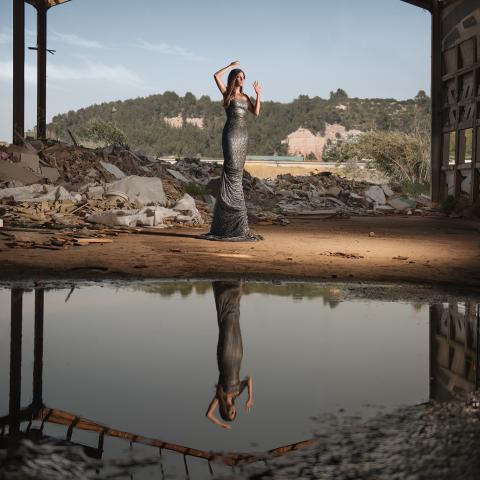"MINERVA"
ColossusThe figures stand up majestically over the unfavourable and dilapidated environment which surrounds them. The surface is full of debris spread out over islets of various sizes which create unusual and dynamic landscapes. It’s curious that debris can be so aesthetical but the heterogeneity of their colours and textures provide surprising plastic qualities. These are attributes which strengthen the undisputed protagonist of this stage, the woman.
Something similar happens with the old industrial architecture, with only a few remnants of what used to be a building still in place. The walls are blackened and full of paintings, the roof is broken and the window openings no longer have any panes. However, all this spatial openings become true sources of light that bathe and sculpt the shapes of the woman body. This series of pictures is after all a tribute to the woman and to her incomparable nature.
The attire selected is not casual. A common dress would not have highlighted the preponderance of the silhouette on the hostile habitat. The drapes of the infinite fabric integrate the protagonist in the environment, while at the same time helping her prevail over it.
Lastly, an essential element is added to the picture: the podium hidden beneath the fabric. Its presence is imperceptible but contributes subtly in underlining the impression of greatness which stems from the elevated women, the metaphorical “colossus”.
While it’s true that the word “colossus” referring to ancient gigantic statues is commonly associated with the male gender, in this occasion the term is used to refer to the grandiosity of the woman. She is able to overcome the most damaging environments and adversaries while remaining a vulnerable being. We should not forger than the most famous and gigantic colossus in ancient Greece – the colossus of Rhoda, built to protect the city – was destroyed by an earthquake. Strength and fragility are not exclusive, they go hand in hand.






